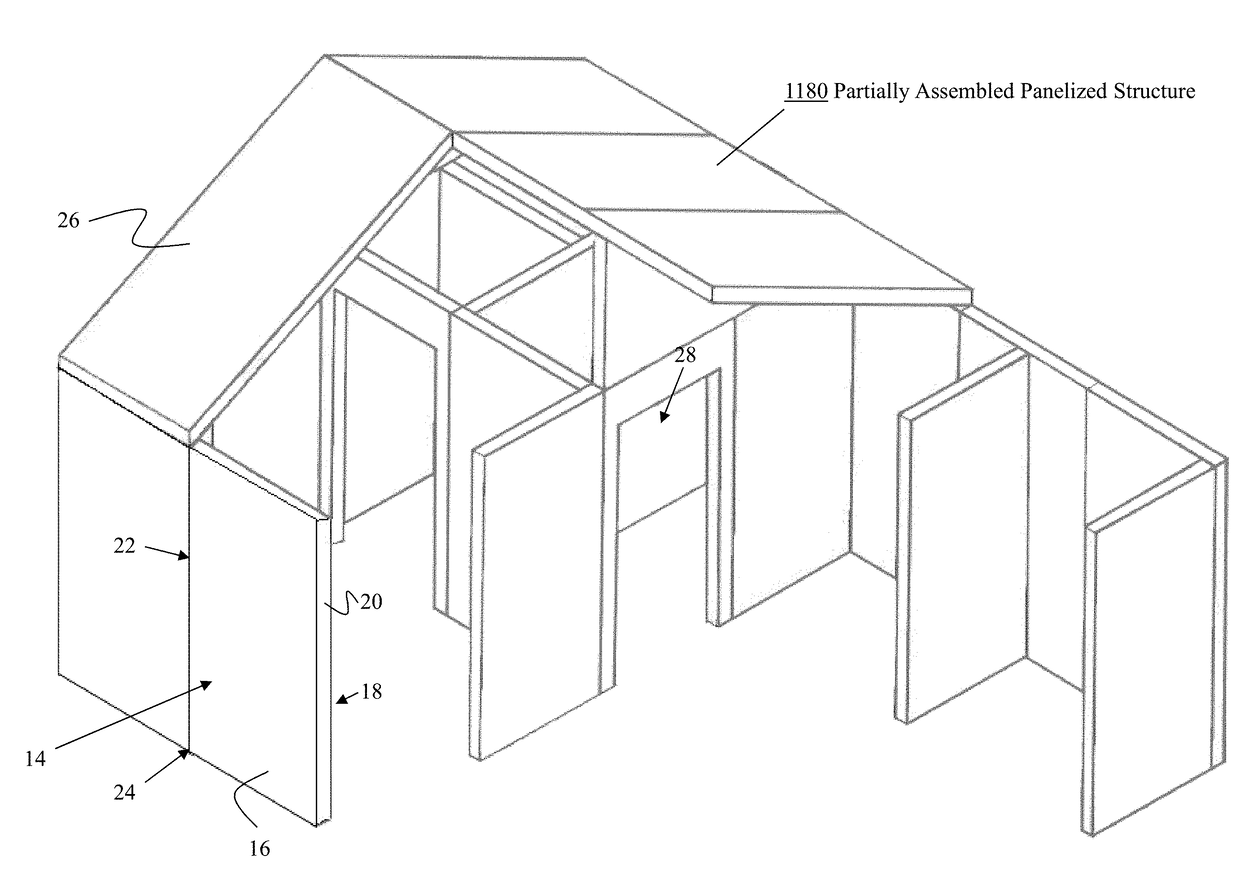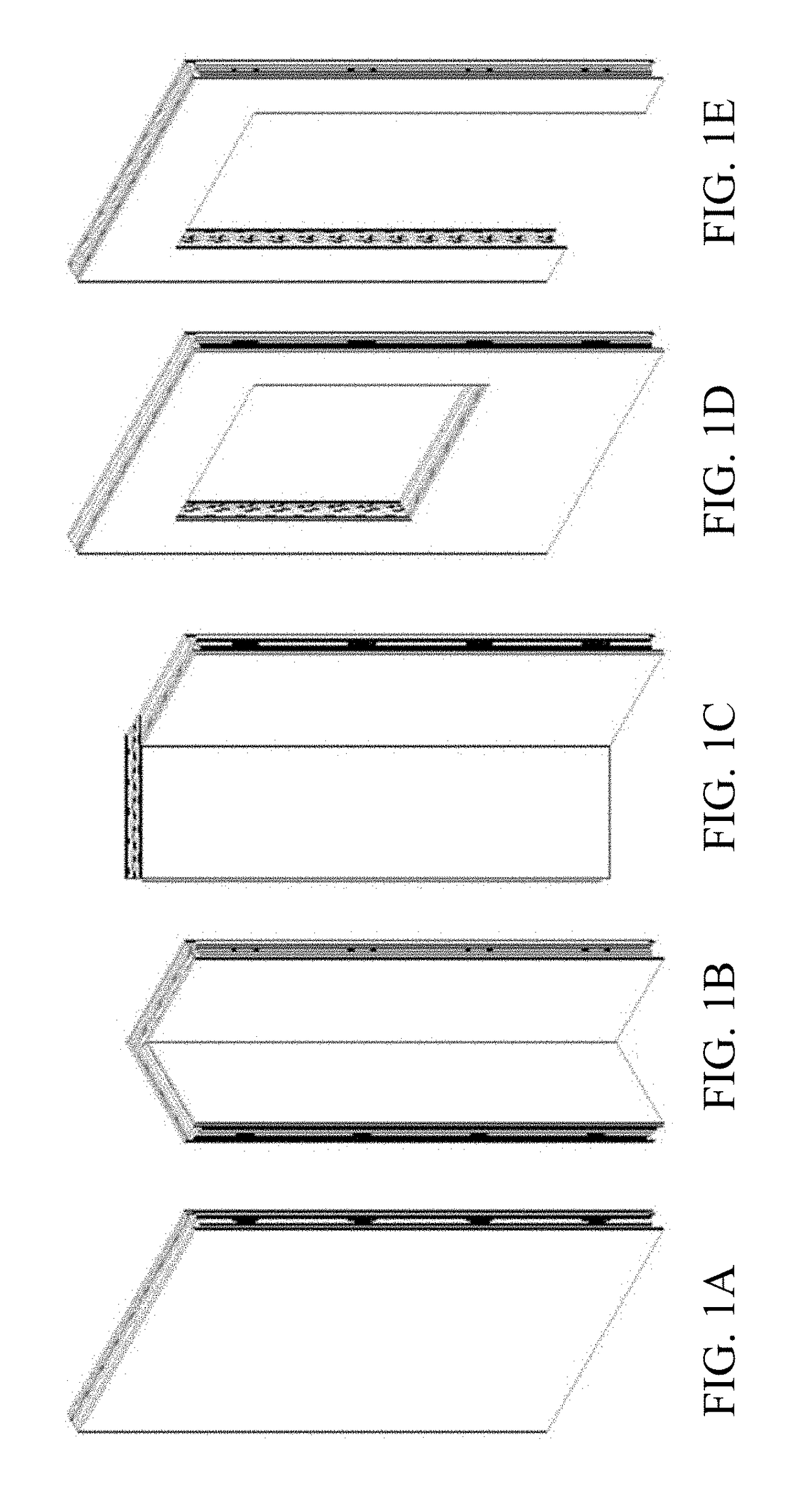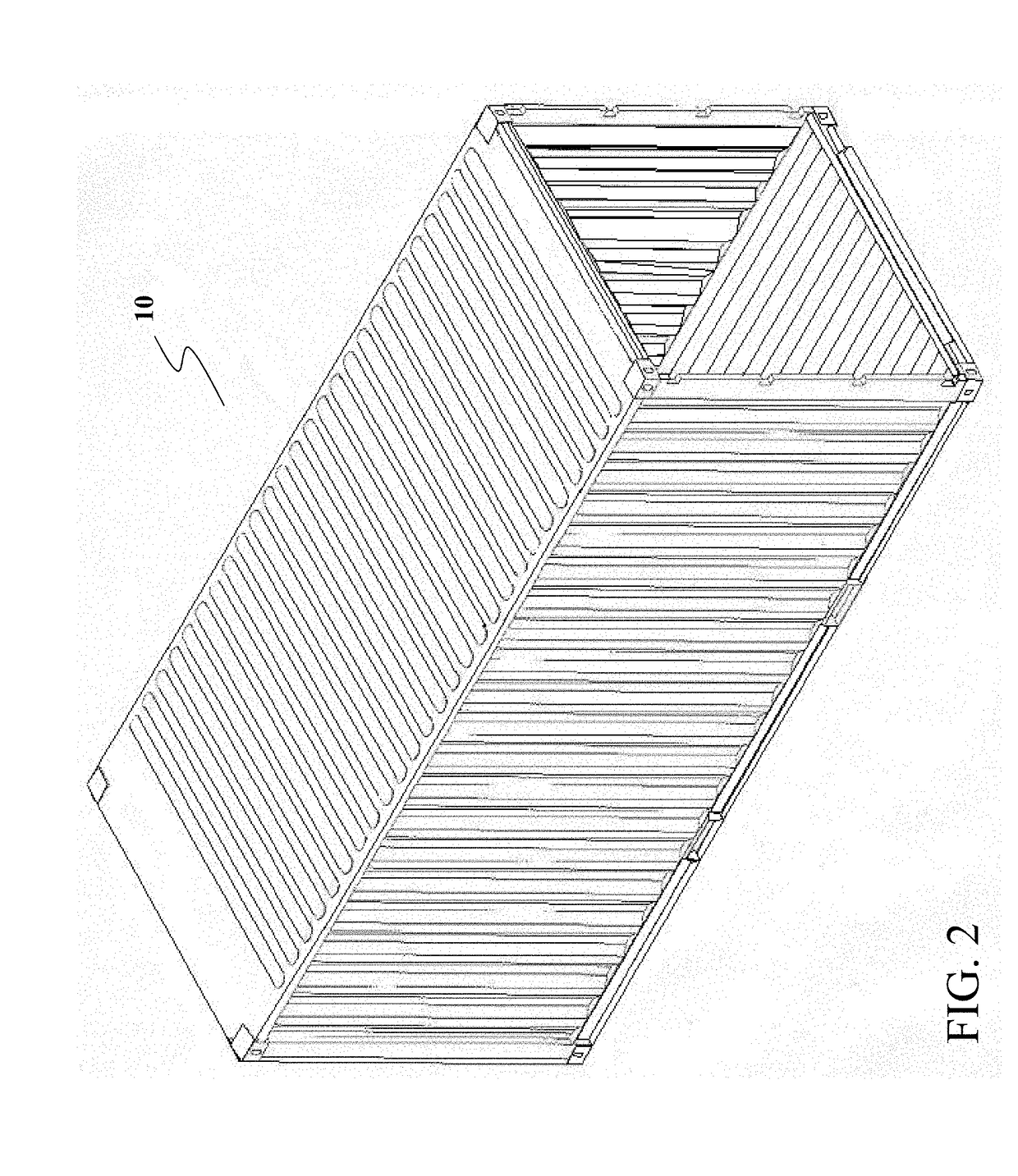Methods and systems for modular buildings
a technology of modular buildings and building panels, applied in the field of modular building systems and methods, can solve the problems of large thermal energy loss, inability to easily remove the wall, and inability to unlock the access point by emergency signals,
- Summary
- Abstract
- Description
- Claims
- Application Information
AI Technical Summary
Benefits of technology
Problems solved by technology
Method used
Image
Examples
Embodiment Construction
[0050]In the following description, like reference characters designate like or corresponding parts throughout the several views. Also in the following description, it is to be understood that such terms as “forward,”“rearward,”“front,”“back,”“right,”“left,”“upwardly,”“downwardly,” and the like are words of convenience and are not to be construed as limiting terms.
[0051]None of the prior art addresses the longstanding need for stable, energy efficient modular building structures, including kits for installing same, in particular having an almost continuously insulated and structurally locked wall, floor and roof panel components that are aligned with a mating edge system with the potential for embedding additional technologies inside of the panels. Thus there remains a need for energy efficient and stable modular building systems and methods for installing them, including providing containerized packaging to facilitate shipment, assembly and installation of the building offering imp...
PUM
 Login to View More
Login to View More Abstract
Description
Claims
Application Information
 Login to View More
Login to View More - R&D
- Intellectual Property
- Life Sciences
- Materials
- Tech Scout
- Unparalleled Data Quality
- Higher Quality Content
- 60% Fewer Hallucinations
Browse by: Latest US Patents, China's latest patents, Technical Efficacy Thesaurus, Application Domain, Technology Topic, Popular Technical Reports.
© 2025 PatSnap. All rights reserved.Legal|Privacy policy|Modern Slavery Act Transparency Statement|Sitemap|About US| Contact US: help@patsnap.com



